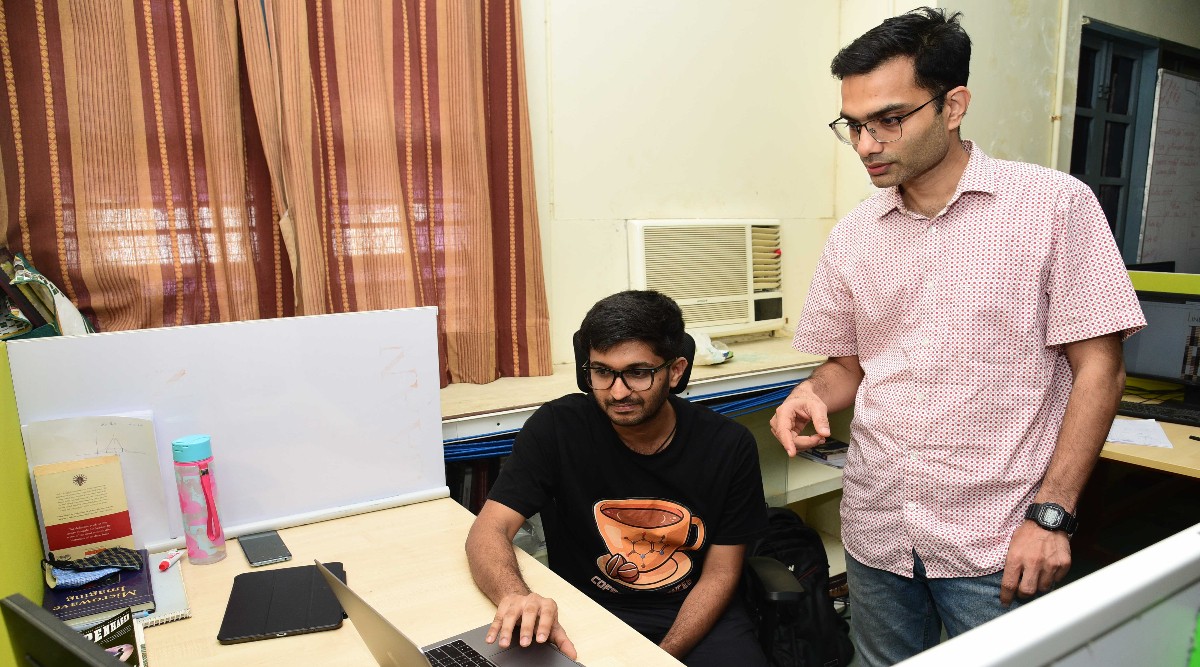 Dr. Uday K Khankhoje (R), Associate Professor, Dept of Electrical Engineering, IIT Madras with Mr. Chandan Bhat, Research Scholar, IIT Madras. (Express photo)
Dr. Uday K Khankhoje (R), Associate Professor, Dept of Electrical Engineering, IIT Madras with Mr. Chandan Bhat, Research Scholar, IIT Madras. (Express photo)Two researchers at the Indian Institute of Technology (IIT Madras) have studied microwave-inverse imaging, which has wide applications in breast cancer detection, non-destructive testing and evaluation, medical imaging and concealed-weapon detection at security checkpoints.
Microwave imaging is an advanced version of radar technology used to photograph hidden or embedded objects in a structure using electromagnetic waves in the microwave frequency range, according to an official statement issued by IIT Madras.
Findings of the research by Dr Uday K Khankhoje, an associate professor of electrical engineering, and Chandan Bhat, a research scholar, have been published in the IEEE Geoscience and Remote Sensing Letters, a peer-reviewed journal.
In microwave imaging, a reference set of measurements are taken traditionally without the object (or patient) in the imaging set-up. Then the object is introduced and a new set of measurements are taken. By taking the difference between these sets of measurements, a physics-based algorithm computes the physical properties of the object. This final step produces a microwave image of the object.
However, the need for two sets of measurements increases the overall imaging time. Further, in some situations such as the detection of objects buried under the ground using a ground-penetrating radar, it is not possible to get a reference set of measurements, simply because extracting a buried object can be impractical, researchers have said.
“Since we can image the object without a prior set of reference measurements without the object, it becomes possible to extend the techniques of microwave imaging to new applications such as underground imaging using ground penetrating radars, and to speed up existing applications such as breast cancer imaging,” he added.
Bhat, the research scholar, said many applications such as indoor scattering and breast cancer detection require two sets of measurements. “The proposed approach provides a solution to reduce the data needed for a general scenario; thus, for a dedicated application, the method can be adjusted and modified with minimal changes,” he said.
The advantages of the proposed technique include a reduction by a factor of two in terms of the time required to perform microwave imaging.